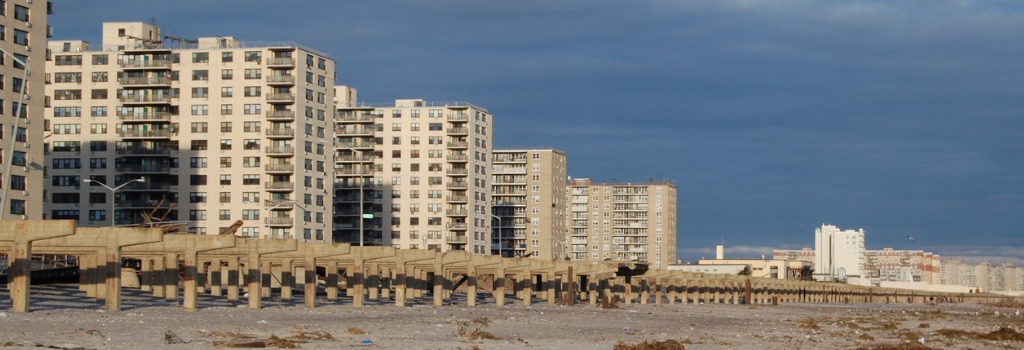Hurricanes can cause significant damage to structures in their path. A typical hurricane can span 25-150 miles, and typically involves winds of 74-157 mph. While tropical storm force winds can extend the width of the storm to 300 miles wide, the wind speed is highest near the center of the storm.
In addition to the strong winds, hurricanes bring heavy rainfall. Outer rainbands contain thunderstorms and can be a few miles wide. With a forward speed of 10-35 mph, these storms can be over land for hours; causing devastation to people and things in their path. Hurricanes also create flooding in coastal areas, though flooding is not addressed in this blog.
Building materials and codes differ across the country, based on the typical weather patterns and expected storm activity. In some places, like the New Hampshire coast, a storm with wind speeds of 90 mile per hour is a once-in-a-century storm. In places like Key West, storms with that level of strength happen every five years or so. Buildings are made to withstand stronger wind forces in areas like the coastal Southeast than they may be in the Northeast.
Whatever the geographic location of a structure, the water and wind from a hurricane mostly present four main risks to buildings:
- Building breach
- Water intrusion
- Roof damage
- Trees
Building Breaches
The closer a structure is to the shoreline, where the storm winds are strongest, the bigger the risk to the integrity of a building. The risk of breaching the building envelope greatly increases as the wind speed increases, as it imparts a significant force on the structure. Wind can knock down weak structures. Even if the building itself remains standing against the force of the wind, damage to the roof and the breakage of windows and doors, from the winds or wind-blown debris, can lead to significant interior damage.
Though many buildings in hurricane-prone areas have hurricane shutters installed to protect the windows, they can and do fail. In some cases, impact-resistant windows are not manufactured or installed correctly and can fail. Once the building envelope is breached, winds and wind pressure affect the interior of the building, potentially causing considerable damage.
Water Intrusion
The high wind pressure of a hurricane, combined with the heavy rainfall, mean that water flows into buildings. The probability of water intrusion increases as the wind speed increases. Water gets into a building as wind-driven rain or floodwaters. Of all sources, water intrusion causes the most building damage in a typical hurricane.
Even if the windows do not break, water can leak through many small openings in buildings including around windows and doors, through penetrations in the building, or infiltrate when the exterior—roof or siding—is damaged.
Roof Damage
Roofs are particularly vulnerable during a hurricane. Wind and wind-blown debris cause four types of damage that result in water intrusion--pulling roofing off, denting metal roofs, peeling back of membranes, partially or completely, or peeling away flashings and copings. Damage to roofing materials can start with winds as low as 65 mph, and at around 90 mph many roofs start to fail.
Trees
During hurricanes, trees are uprooted and can strike structures, branches are blown around, and can breach a building. Architects and engineers do not design a building to be struck by a tree, but they do design it to prevent a 2x4 from going through the window.
Preparing for the Next Storm
Proper preparation to protect your structure in the event a hurricane starts before the beginning of hurricane season—by doing things like testing that hurricane shutters close and securing outside items and equipment, inspecting trees and removing dead limbs, stocking plywood to cover windows if necessary, and repairing and maintaining roofs.
Hurricanes typically form and are trackable for up to two weeks before they hit land, and a few days before the storm it is possible to predict with reasonable accuracy what areas will get the brunt of the storm. That is the time to do any final preparation, such as engaging the hurricane shutters, boarding up windows, securing outdoor equipment, and using sandbags or other appropriate barriers at doorways to prevent water intrusion.
We have extensive experience in helping rebuild structures damaged by hurricanes. CCA can help you recover after the fact or help you protect your building before a storm. Give us a call today to learn more.



